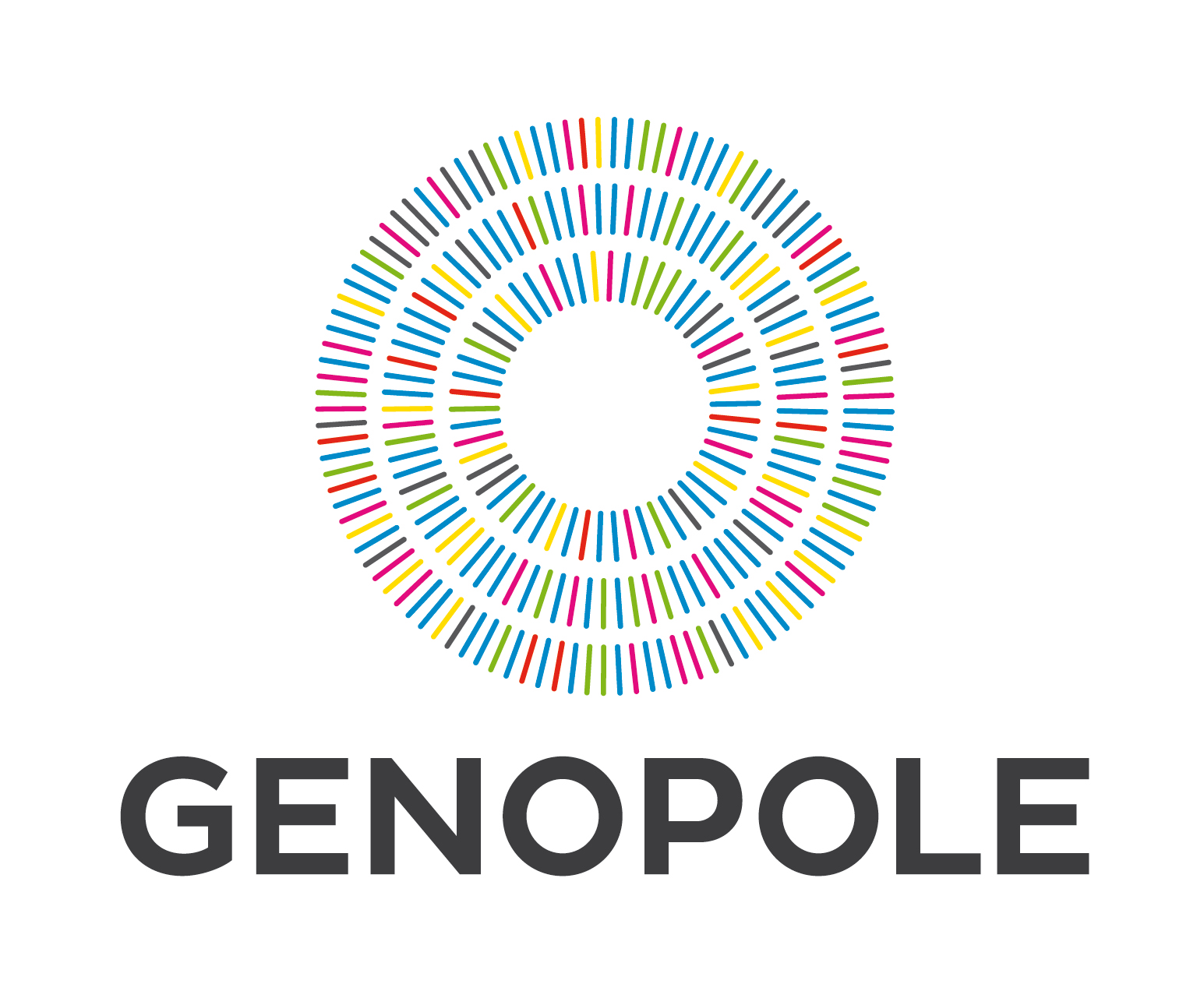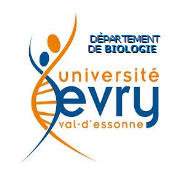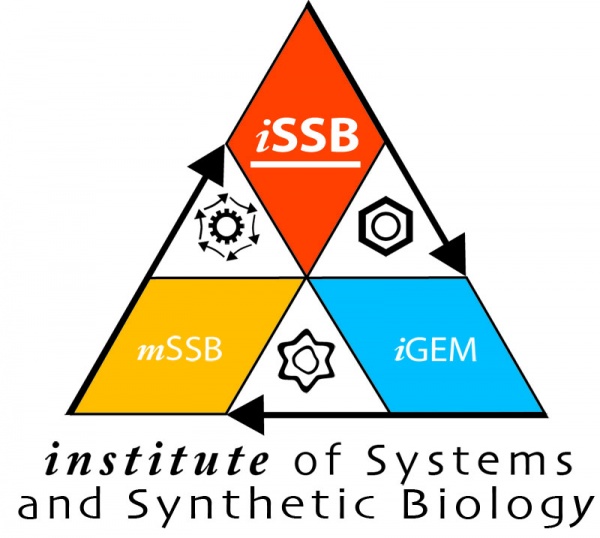Team:Evry/Project
From 2013.igem.org
| (120 intermediate revisions not shown) | |||
| Line 1: | Line 1: | ||
| - | {{:Team:Evry/ | + | {{:Team:Evry/template_project}} |
| + | |||
<html> | <html> | ||
| - | < | + | <div id="mainTextcontainer"> |
| - | <h1 | + | <h1>Overview</h1> |
| + | <div align='center'><img src="https://static.igem.org/mediawiki/2013/5/59/Overview.png" width="70%"/></div> | ||
| - | |||
<p> | <p> | ||
| - | + | Our Iron Coli Project deals with <a href="https://2013.igem.org/Team:Evry/Project_diseases">hemochromatosis</a>. Hemochromatosis is an autosomal recessive disorder which is the most frequent genetic disease in Europe as it affects over two millions people. It is caused by a mutation on the HFE gene, which leads to an <a href="https://2013.igem.org/Team:Evry/Project_metabolism">overabsorption of iron</a> in the upper region of the intestine. This iron overload is stored in many organs and tissues, which eventually causes chronic insuficiences as heart, liver and kidney failures. | |
| - | + | </p> | |
| - | + | ||
<p> | <p> | ||
| - | + | The only available treatment for patients suffering from hemochromatosic nowadays is blood-lettings. <a href="https://2013.igem.org/Team:Evry/Seminar">Discussing with patients</a> we discover that this treatment is time-consumming and is often barely tolerated. To find a solution, we worked on the creation of a bacterial treatment to prevent iron overload in hemochromatosis.</p> | |
| - | + | ||
| - | + | ||
| - | + | ||
| - | + | ||
| - | </p | + | |
<p> | <p> | ||
| - | + | We focused on a natural iron <a href="https://2013.igem.org/Team:Evry/Project_FUR">chelating molecule</a> called enterobactins that is produced in iron starvation case by <i>E. coli</i>. For our project, we wanted to invert this natural behaviour, so <i>E. coli</i> would produce these enterobactins in high iron concentration. To deliver our bacteria right in the duodenum where it would prevent the iron absorption, we also worked on the design of a gastro resistant <a href="https://2013.igem.org/Team:Evry/Pill_design">capsule</a>. | |
</p> | </p> | ||
| - | < | + | <p> |
| + | We first wanted to know if our bacterial treatment would be accepted by the patients. Then, we conducted a <a href="https://2013.igem.org/Team:Evry/HumanPractice/Patients_perceptions">survey</a> to ask for their opinion. It appears that a majority of hemochromatosic patients would actually agree on taking our treatment. <br/> | ||
| + | We also created a <a href="https://2013.igem.org/Team:Evry/Safety">fault tree</a> to identify the consequences involved if <i>E. coli</i> will stay permantly or temporarily into the intestine. This study oriented our modelling team to a <a href="https://2013.igem.org/Team:Evry/flush_model">flush strategy</a>, meaning that <i>E. coli</i> only stays temporarily in the intestine. Their model predicted that our engineered <i>E. coli</i> (<b><span style="color:#bb8900">Iron</span><span style="color:#7B0000"> Coli</span></b>) could divide by two the amount of iron absorbed by a hemochromatosic patient.<br/> | ||
| + | Knowing that our treatment would be accepted and beneficial to patients, we then focused on the biology of our project. We obtained two biobricks : an <a href="https://2013.igem.org/Team:Evry/Sensor">iron sensing device</a> and an <a href="https://2013.igem.org/Team:Evry/Inverter">inverter signal system</a>. | ||
| + | </p> | ||
| - | < | + | <p> |
| + | We wonder how much time it would take for our <b><span style="color:#bb8900">Iron</span><span style="color:#7B0000"> Coli</span></b> to produce enterobactin and if overproducing them would unbalance <i>E. coli</i> metabolism. Results obtained from the <a href="https://2013.igem.org/Team:Evry/Metabolism_model">Flux Balance Analysis</a> and a <a href="https://2013.igem.org/Team:Evry/Modelmeta3">differencial equation model</a> leads our biologists to optimize their construction and design a <a href="https://2013.igem.org/Team:Evry/Pill_design">delivery capsule</a>. | ||
| + | </p> | ||
| - | <p> | + | <p> |
| + | Through our project, we managed to made an integrated <a href="https://2013.igem.org/Team:Evry/HumanPractice">human practice</a> study as well as creating useful <a href="https://2013.igem.org/Team:Evry/Modeling">models</a> that both equally contributed to the realisation of our final project. | ||
| + | </p> | ||
| - | + | </div> | |
| - | + | </div> | |
| - | + | </html> | |
| - | + | ||
| - | + | ||
| - | + | ||
| - | + | ||
| - | + | ||
| - | + | ||
| - | + | {{:Team:Evry/foot}} | |
| - | + | ||
| - | + | ||
| - | + | ||
Latest revision as of 03:43, 29 October 2013
Overview

Our Iron Coli Project deals with hemochromatosis. Hemochromatosis is an autosomal recessive disorder which is the most frequent genetic disease in Europe as it affects over two millions people. It is caused by a mutation on the HFE gene, which leads to an overabsorption of iron in the upper region of the intestine. This iron overload is stored in many organs and tissues, which eventually causes chronic insuficiences as heart, liver and kidney failures.
The only available treatment for patients suffering from hemochromatosic nowadays is blood-lettings. Discussing with patients we discover that this treatment is time-consumming and is often barely tolerated. To find a solution, we worked on the creation of a bacterial treatment to prevent iron overload in hemochromatosis.
We focused on a natural iron chelating molecule called enterobactins that is produced in iron starvation case by E. coli. For our project, we wanted to invert this natural behaviour, so E. coli would produce these enterobactins in high iron concentration. To deliver our bacteria right in the duodenum where it would prevent the iron absorption, we also worked on the design of a gastro resistant capsule.
We first wanted to know if our bacterial treatment would be accepted by the patients. Then, we conducted a survey to ask for their opinion. It appears that a majority of hemochromatosic patients would actually agree on taking our treatment.
We also created a fault tree to identify the consequences involved if E. coli will stay permantly or temporarily into the intestine. This study oriented our modelling team to a flush strategy, meaning that E. coli only stays temporarily in the intestine. Their model predicted that our engineered E. coli (Iron Coli) could divide by two the amount of iron absorbed by a hemochromatosic patient.
Knowing that our treatment would be accepted and beneficial to patients, we then focused on the biology of our project. We obtained two biobricks : an iron sensing device and an inverter signal system.
We wonder how much time it would take for our Iron Coli to produce enterobactin and if overproducing them would unbalance E. coli metabolism. Results obtained from the Flux Balance Analysis and a differencial equation model leads our biologists to optimize their construction and design a delivery capsule.
Through our project, we managed to made an integrated human practice study as well as creating useful models that both equally contributed to the realisation of our final project.
 "
"













